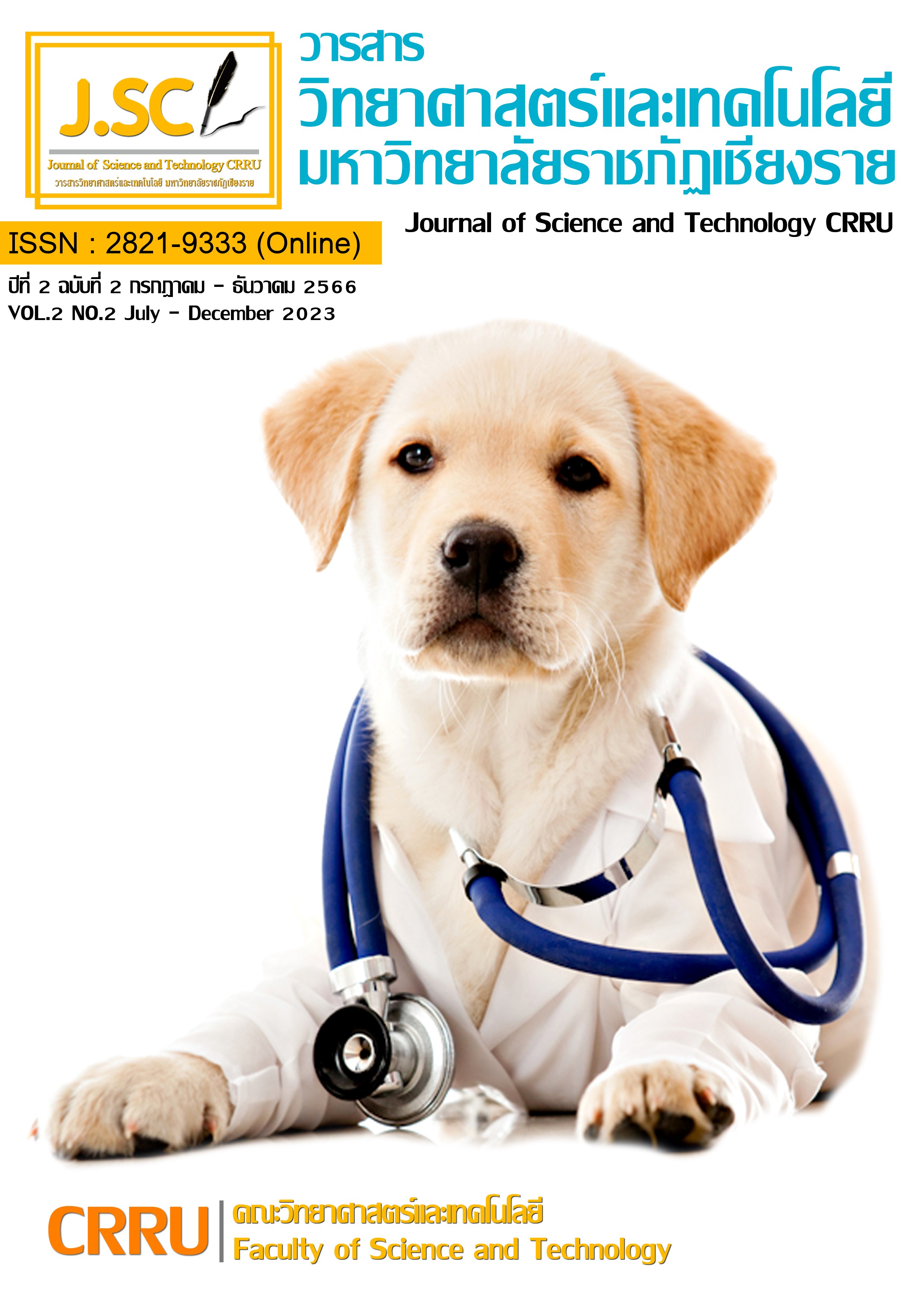The effects of Camellia sinensis Flower extract on the phytochemical and sensory evaluation of drinking jelly
Main Article Content
Abstract
The aim of this research is to investigate the effects of Camellia sinensis Flower extract, brewed using the Twining method, on the phytochemical and sensory evaluation of a ready-to-drink jelly product.
The study on antioxidant efficacy revealed that Formula 4 has the highest levels of total phenolic content and flavonoid compounds, with values equivalent to 45.80 mg GAE/100 ml and 8.24 mg CE/100 ml, respectively. Regarding the analysis of antioxidant activity using DPPH and FRAP methods, Formula 4 also exhibited the highest values at 154.85 and 165.15 µmol TE/100 ml, respectively. In the sensory evaluation across all 5 aspects of drinking jelly products from Camellia sinensis Flower extract in the 5 formulas, it was found that Formula 4, which had tea extract at 75%, sugar at 10%, and honey at 15%, received the highest scores for aroma, taste, and overall appearance. Regarding overall preference, it was found that the taste testers favored Formula 5, which had tea extract at 80%, sugar at 9%, and honey at 11%. Additionally, it was noted that there were no significant differences in color and aroma ratings among the taste testers (p≥0.05).
Article Details

This work is licensed under a Creative Commons Attribution-NonCommercial-NoDerivatives 4.0 International License.
Journal of TCI is licensed under a Creative Commons Attribution-NonCommercial-NoDerivatives 4.0 International (CC BY-NC-ND 4.0)
References
Zhou, Y., Peng, O., Zeng, L., Tang, J., Li, J., Dong, F., & Yang, Z. (2018). Study of the biochemical formation pathway of aroma compound 1-phenylethanol in tea (Camellia sinensis (L.) O. Kuntze) flowers and other plants. Food Chemistry, 258, 352-358.
Shen, X., Shi, L., Pan, H., Li, B., Wu, Y., & Tu, Y. (2017). Identification of triterpenoid saponins in flowers of four Camellia Sinensis cultivars from Zhejiang province: Differences between cultivars, developmental stages, and tissues. Industrial Crops and Products, 95, 140-147.
ศศิอาภา บุญคง, และรักชนก ปั้นอินทร์. (2562). การพัฒนาผลิตภัณฑ์เยลลี่มะนาวโห่พร้อมดื่ม. กรุงเทพฯ: มหาวิทยาลัยเกษตรศาสตร์.
พิมพ์เพ็ญ พรเฉลิมพงศ์, และนิธิยา รัตนาปนนท์ (ม.ป.ป.). Phenolic compounds / สารประกอบ
ฟีนอล. Food Network Solution. สืบค้นจาก http://www.foodnetworksolution.com/wiki/word/2585/phenolic-compounds-สารประกอบฟีนอล.
เอนก หาลี, นิศาชล นาเวช, และสุรีวัลย์ วรอรุณ. (2561). การพัฒนาผลิตภัณฑ์เยลลี่ขาวหักไรซ์เบอรี่เสริมสารสกัดจากหญ้าหวาน. วารสารวิทยาศาสตร์แห่งมหาวิทยาลัยราชภัฏเพชรบุรี, 16(2), 26-33.
Singleton, V. L., Orthofer, R., & Lamuela-R, R. M. (1999). Analysis of total phenols and other oxidation substrates and antioxidants by means of folinciocalteu reagent. Journal of Methods in Enzymology, 299, 152–178.
Jia, Z., Tang, M., & Wu, J. (1999), “The Determination of Flavonoid Contents in Mulberry and Their Scavenging Effects on Superoxide Radicals,” Journal of Food Chemistry, 64, 555–5592.
Nuengchamnong, N., Krittasilp, K., & Ingkaninan, K. (2009). “Rapid Screening and Identification of Antioxidants in Aqueous Extracts of Houttuyniacordata using LC–ESI– MS coupled with DPPH assay,” Food Chemistry, 117, 750–756.
Benzie, F.F., & Strain, J.J. (1996). “The Ferric Reducing Ability of Plasma (FRAP) as a Measure of ‘Antioxidant Power’: The FRAP Assay,” Analytical Biochemistry, 239, 70-76.
Jirumand, J., & Srihanam, P. (2011). “Oxidants and Antioxidants: Sources and Mechanism,” Acad. Kalasin Rajabhat University, 1, 59-70.
Chen, P.N., Kuo, W.H., Chiang, C.L., Chiou, H.L., Hsieh, Y.S., & Chu, S.C. (2006). “Black Rice Anthocyanins Inhibit Cancer Cells Invasion Via Repressions of MMPs and u-PA Expression,” Journal of Chemico- Biological Interactions, 163, 218-229.
นธิดา ลิ่มเสฎโฐ. (2557). สารต้านอนุมูลอิสระในผลิตภัณฑ์จากใบชา ใบหม่อน และใบมะรุม. รายงานการวิจัย. มหาวิทยาราชภัฏสงขลา.


